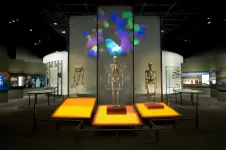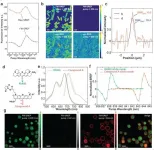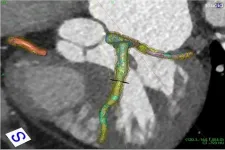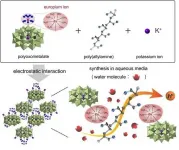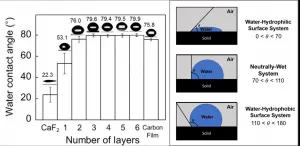"One of the most fundamental questions about human nature is what sparked the explosive emergence of creativity in modern humans in the period just before and after their widespread dispersal from Africa and the related extinction of Neanderthals and other human relatives," said study co-author Ian Tattersall, curator emeritus in the American Museum of Natural History's Division of Anthropology. "Major controversies persist about the basis for human creativity in art and science, as well as about potential differences in cognition, language, and personality that distinguish modern humans from extinct hominids. This new study is the result of a truly pathbreaking use of genomic methodologies to enlighten us about the mechanisms underpinning our uniqueness."
Modern humans demonstrate remarkable creativity compared to their closest living relatives, the great apes (chimpanzees, gorillas, and orangutans and their immediate ancestors), including innovativeness, flexibility, depth of planning, and related cognitive abilities for symbolism and self-awareness that also enable spontaneous generation of narrative art and language. But the genetic basis for the emergence of creativity in modern humans remains a mystery, even after the recovery of full-genome data for both chimpanzees and our extinct close relatives the Neanderthals.
"It has been difficult to identify the genes that led to the emergence of human creativity before now because of the large number of changes in the human genome after it diverged from the common ancestor of humans and chimpanzees around 10 million years ago, as well as uncertainty about the functions of those changes," said Robert Cloninger, a psychiatrist and geneticist at Washington University in St. Louis, and the lead author of the study. "Therefore, we began our research by first identifying the way the genes that influence modern human personality are organized into coordinated systems of learning that have allowed us to adapt flexibly and creatively to changing life conditions."
The team led by Cloninger had previously identified 972 genes that regulate gene expression for human personality, which is comprised of three nearly separate networks for learning and memory. One, for regulating emotional reactivity--emotional drives, habit learning, social attachment, conflict resolution--emerged in monkeys and apes about 40 million years ago. The second, which regulates intentional self-control--self-directedness and cooperation for mutual benefit--emerged a little less than 2 million years ago. A third one, for creative self-awareness, emerged about 100,000 years ago.
In the latest study, the researchers discovered that 267 genes from this larger group are found only in modern humans and not in chimpanzees or Neanderthals. These uniquely human genes code for the self-awareness brain network and also regulate processes that allow Homo sapiens to be creative in narrative art and science, to be more prosocial, and to live longer lives through greater resistance to aging, injury, and illness than the now-extinct hominids they replaced.
Genes regulating emotional reactivity were nearly the same in humans, Neanderthals, and chimps. And Neanderthals were about midway between chimps and Homo sapiens in their genes for self-control and self-awareness.
"We found that the adaptability and well-being of Neanderthals was about 60 to 70 percent of that of Homo sapiens, which means that the difference in fitness between them was large," Cloninger said. "After the more creative, sociable, and physically resilient Homo sapiens migrated out of Africa between 65,000 and 55,000 years ago, they displaced Neanderthals and other hominids, who all became extinct soon after 40,000 years ago."
The genes that distinguish modern humans from Neanderthals and chimpanzees are nearly all regulatory genes made of RNA, not protein-coding genes made of DNA.
"The protein-coding genes of Homo sapiens, Neanderthals, and chimps are nearly all the same, and what distinguishes these species is the regulation of the expression of their protein-coding genes by the genes found only in humans," said co-author Igor Zwir, a computer scientist at Washington University School of Medicine and the University of Granada. "We found that the regulatory genes unique to modern humans were constituents of clusters together with particular protein-coding genes that are overexpressed in the human brain network for self-awareness. The self-awareness network is essential to the physical, mental, and social well-being of humans because it provides the insight to regulate our habits in accord with our goals and values."
The researchers determined that the genes unique to modern humans were selected because of advantages tied to greater creativity, prosocial behavior, and healthy longevity. Living longer, healthier lives and being more prosocial and altruistic allowed Homo sapiens to support their children, grandchildren, and others in their communities throughout their lives in diverse and sometimes harsh conditions. And being more innovative than other hominids allowed humans to adapt more flexibly to unpredictable climatic fluctuations.
"In the bigger picture, this study helps us understand how we can effectively respond to the challenges that modern humans currently face," Tattersall said. "Our behavior is not fixed or determined by our genes. Indeed, human creativity, prosociality, and healthy longevity emerged in the context of the need to adjust rapidly to harsh and diverse conditions and to communicate in large social groups."
Added co-author Coral del Val of the University of Granada, "Now, we face similar challenges to which we must also respond creatively, as we did originally. Unfortunately, when we are exposed to conditions of fear, conflict, inequity, abuse or neglect, our self-awareness is impaired, which diminishes our ability to use our potential for creativity and to achieve well-being. Learning more about the regulatory genes unique to modern humans may help us to promote human well-being as we face these new environmental and social challenges."
INFORMATION:
ABOUT THE AMERICAN MUSEUM OF NATURAL HISTORY (AMNH)
The American Museum of Natural History, founded in 1869 and currently celebrating its 150th anniversary, is one of the world's preeminent scientific, educational, and cultural institutions. The Museum encompasses more than 40 permanent exhibition halls, including those in the Rose Center for Earth and Space, as well as galleries for temporary exhibitions. The Museum's approximately 200 scientists draw on a world-class research collection of more than 34 million artifacts and specimens, some of which are billions of years old, and on one of the largest natural history libraries in the world. Through its Richard Gilder Graduate School, the Museum grants the Ph.D. degree in Comparative Biology and the Master of Arts in Teaching (MAT) degree, the only such free-standing, degree-granting programs at any museum in the United States. The Museum's website, digital videos, and apps for mobile devices bring its collections, exhibitions, and educational programs to millions around the world. Visit amnh.org for more information.
